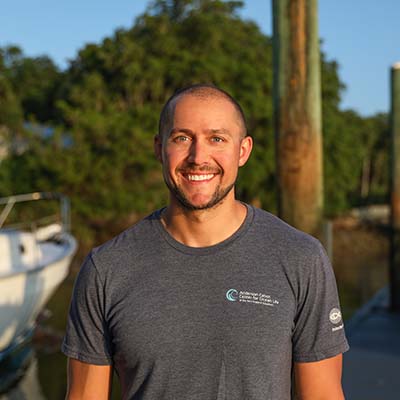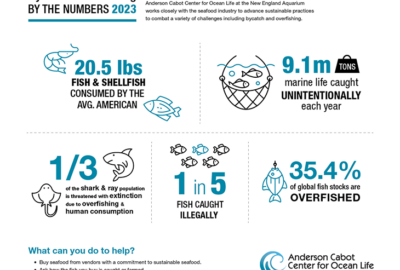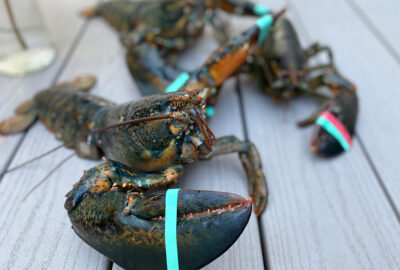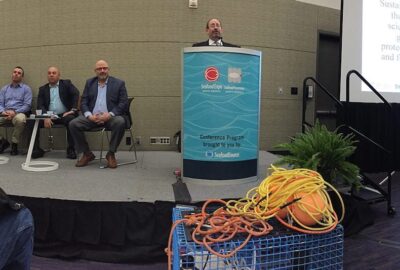Please note: We strongly recommend purchasing tickets online in advance during the heat wave, as our ticket booth is located outdoors.
Determining discard mortality of monkfish in a sea scallop dredge fishery
By Amelia Weissman, Ryan Knotek, John Mandelman, David Rudders, Sally Roman, James Sulikowski
Originally published in North American Journal of Fisheries Management in May 2021

Abstract
Discard mortality studies are considered a primary research priority, particularly for species and fisheries where discard rates are high. Monkfish (the commercial name for Goosefish) Lophius americanus supports the most lucrative finfish fishery in New England, and it is also the second highest bycatch species by weight in the sea scallop dredge fishery. Despite its commercial importance, no data exist with respect to monkfish discard mortality estimates for any gear type. The goals of this study were to evaluate the discard mortality process for monkfish captured in sea scallop dredge gear, estimate mortality rate, and develop best handling/management practices to mitigate the impact of monkfish bycatch in the sea scallop dredge fishery. Discard mortality was estimated during a field study conducted between June and October 2017 on board sea scallop commercial fishing vessels on Georges Bank in the Northwest Atlantic. Pop-up satellite tags were affixed to 60 monkfish to track survival from 14 to 28 d postcapture. From these monitored individuals, high predation rates were observed (n = 18 out of 26 mortalities), and the bulk of mortalities (n = 21) occurred within the first 24 h of discarding. However, in light of having no clear method for disentangling capture-related and tag-induced predation, predation was noted exclusively as one or the other to account for uncertainty and provide an upper and lower bound of mortality. This approach suggested that the discard mortality rate was between 17.9% and 54.1% for monkfish discarded by scallop dredges and that elevated air temperatures (above thermal preferences) may contribute to increased mortality. Based on these results, it appears that monkfish discard mortality is lower than previous assumptions of 100%, and potential best-practice management suggestions moving forward may include minimizing fishing in areas of high monkfish abundance or scheduling rotating time/area closures during periods when air temperature exceeds monkfish thermal tolerance of 13°C.
Full Text






